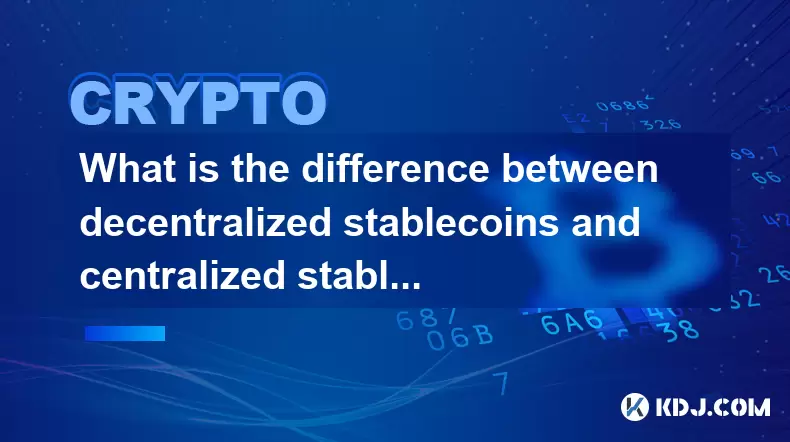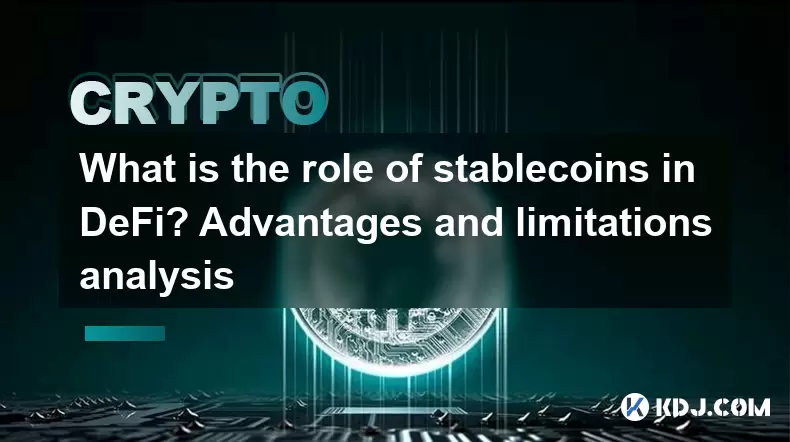-
 Bitcoin
Bitcoin $117600
0.25% -
 Ethereum
Ethereum $4424
0.10% -
 XRP
XRP $3.101
0.50% -
 Tether USDt
Tether USDt $1.001
-0.01% -
 BNB
BNB $836.2
1.26% -
 Solana
Solana $188.8
2.11% -
 USDC
USDC $1.000
0.01% -
 Dogecoin
Dogecoin $0.2301
0.57% -
 TRON
TRON $0.3485
-1.00% -
 Cardano
Cardano $0.9209
-1.34% -
 Hyperliquid
Hyperliquid $46.72
-1.19% -
 Chainlink
Chainlink $22.62
4.84% -
 Stellar
Stellar $0.4275
-0.38% -
 Sui
Sui $3.761
1.91% -
 Bitcoin Cash
Bitcoin Cash $586.7
-0.25% -
 Ethena USDe
Ethena USDe $1.001
0.01% -
 Hedera
Hedera $0.2510
2.06% -
 Avalanche
Avalanche $24.21
2.22% -
 Litecoin
Litecoin $119.7
1.07% -
 Toncoin
Toncoin $3.450
1.06% -
 UNUS SED LEO
UNUS SED LEO $9.411
-0.93% -
 Shiba Inu
Shiba Inu $0.00001298
1.20% -
 Uniswap
Uniswap $10.98
3.25% -
 Polkadot
Polkadot $3.961
2.16% -
 Dai
Dai $1.000
0.00% -
 Bitget Token
Bitget Token $4.642
0.95% -
 Cronos
Cronos $0.1514
0.57% -
 Ethena
Ethena $0.7290
3.78% -
 Monero
Monero $254.1
7.69% -
 Pepe
Pepe $0.00001102
2.47%
How do stablecoins maintain price stability? What mechanisms support them?
Stablecoins minimize crypto volatility by pegging to assets like USD; mechanisms include fiat-collateral, crypto-collateral, algorithmic, and hybrid approaches.
May 15, 2025 at 10:29 pm

Stablecoins are a type of cryptocurrency designed to minimize the volatility typically associated with other digital currencies like Bitcoin and Ethereum. Their primary goal is to maintain a stable value, usually pegged to a specific asset or basket of assets such as the US dollar, gold, or a combination of fiat currencies. This article explores the various mechanisms through which stablecoins achieve and maintain price stability.
Fiat-Collateralized Stablecoins
Fiat-collateralized stablecoins are backed by traditional fiat currencies held in reserve. For example, the most well-known stablecoin, Tether (USDT), is pegged to the US dollar at a 1:1 ratio. The issuer of USDT, Tether Limited, claims to hold an equivalent amount of US dollars in reserve for every USDT token in circulation.
The stability mechanism for fiat-collateralized stablecoins is straightforward. When users want to redeem their stablecoins for the underlying fiat currency, they can do so at the pegged rate. This process ensures that the value of the stablecoin remains closely tied to the value of the fiat currency. Here’s how it works in practice:
- Issuance: When a user wants to buy USDT, they send US dollars to Tether Limited, who then mints an equivalent amount of USDT and sends it to the user’s wallet.
- Redemption: If a user wants to convert their USDT back to US dollars, they send their USDT to Tether Limited, who then burns the USDT and sends the equivalent amount of US dollars back to the user.
This direct backing by fiat reserves ensures that the stablecoin can maintain its peg, provided that the issuer maintains sufficient reserves and operates transparently.
Crypto-Collateralized Stablecoins
Crypto-collateralized stablecoins are backed by other cryptocurrencies, often over-collateralized to account for the volatility of the crypto assets. A popular example of this type of stablecoin is Dai, issued by the MakerDAO platform, which is pegged to the US dollar and backed by Ethereum.
The stability mechanism for crypto-collateralized stablecoins involves a more complex system due to the inherent volatility of the collateral. Here’s how it works:
- Collateralization: Users deposit Ethereum (or other accepted cryptocurrencies) into a smart contract on the MakerDAO platform, which then mints an equivalent amount of Dai, adjusted for over-collateralization (typically 150% or more).
- Stability Mechanism: The value of Dai is maintained through a system of incentives and penalties. If the value of Dai falls below $1, users can buy Dai at a discount and then redeem it for more valuable collateral, which incentivizes the price to return to the peg. Conversely, if the value of Dai rises above $1, users can deposit more collateral to mint more Dai, which increases the supply and helps bring the price back down.
This system relies on the stability of the smart contract and the over-collateralization to ensure that the value of the stablecoin remains stable despite the volatility of the underlying crypto assets.
Algorithmic Stablecoins
Algorithmic stablecoins do not rely on any collateral but instead use algorithms to control the supply of the stablecoin to maintain its peg. A well-known example is Ampleforth (AMPL), which aims to maintain a stable value by adjusting its supply daily.
The stability mechanism for algorithmic stablecoins is based on the following principles:
- Rebasing: The supply of AMPL is adjusted daily based on the price deviation from the target price. If the price of AMPL is above the target, the supply is increased, diluting the value of each token. If the price is below the target, the supply is decreased, increasing the value of each token.
- Market Forces: These adjustments are designed to use market forces to push the price back to the target. If the supply increases, holders may sell their tokens, driving the price down. If the supply decreases, holders may buy more, driving the price up.
This method relies on the effectiveness of the algorithm and the responsiveness of the market to maintain the stability of the stablecoin.
Hybrid Stablecoins
Hybrid stablecoins combine elements of both collateralized and algorithmic mechanisms to achieve stability. An example is Frax, which uses a combination of collateral (in the form of USDC) and an algorithm to manage its supply.
The stability mechanism for hybrid stablecoins involves:
- Partial Collateralization: A portion of the stablecoin’s value is backed by collateral (e.g., USDC), providing a baseline level of stability.
- Algorithmic Adjustment: The remaining portion of the stablecoin’s value is managed by an algorithm that adjusts the supply based on market conditions, similar to algorithmic stablecoins.
This dual approach aims to leverage the strengths of both collateralized and algorithmic mechanisms to achieve a more robust and stable value.
Regulatory and Market Factors
In addition to the technical mechanisms, regulatory and market factors play a significant role in the stability of stablecoins. Regulatory oversight can ensure that issuers maintain adequate reserves and operate transparently, which is crucial for fiat-collateralized stablecoins. For example, the New York State Department of Financial Services (NYDFS) has been actively monitoring and regulating stablecoin issuers to ensure compliance with reserve requirements.
Market confidence is also a critical factor. If users believe that a stablecoin is backed by sufficient reserves or that its algorithmic mechanism is effective, they are more likely to use and hold the stablecoin, which helps maintain its stability. Conversely, if there are concerns about the stability or integrity of a stablecoin, users may rush to redeem their tokens, which can lead to a de-pegging event.
Frequently Asked Questions
Q: Can stablecoins be used for everyday transactions?
Yes, stablecoins can be used for everyday transactions due to their stable value. Many businesses and platforms accept stablecoins like USDT and USDC for payments, making them a viable option for daily use.
Q: Are stablecoins considered a safe investment?
While stablecoins are designed to be less volatile than other cryptocurrencies, they are not without risk. The safety of an investment in stablecoins depends on the stability mechanism, the transparency of the issuer, and the regulatory environment. Investors should conduct thorough research before investing.
Q: How do stablecoins impact the broader cryptocurrency ecosystem?
Stablecoins play a crucial role in the cryptocurrency ecosystem by providing a stable medium of exchange and a safe haven during market volatility. They facilitate trading, lending, and borrowing within decentralized finance (DeFi) platforms, enhancing the overall functionality and liquidity of the ecosystem.
Q: What happens if a stablecoin loses its peg?
If a stablecoin loses its peg, it can lead to a loss of confidence among users, resulting in a rush to redeem the stablecoin for the underlying asset. This can cause further de-pegging and potential collapse of the stablecoin if the issuer cannot meet redemption demands. Mechanisms like over-collateralization and algorithmic adjustments are designed to prevent or mitigate such events.
Disclaimer:info@kdj.com
The information provided is not trading advice. kdj.com does not assume any responsibility for any investments made based on the information provided in this article. Cryptocurrencies are highly volatile and it is highly recommended that you invest with caution after thorough research!
If you believe that the content used on this website infringes your copyright, please contact us immediately (info@kdj.com) and we will delete it promptly.
- Kazakhstan's Crypto Leap: Bitcoin ETF and Central Asia's Digital Finance Future
- 2025-08-13 12:45:19
- BlockDAG Presale Blazes Past $371M: Fundraising Frenzy Fuels Crypto Sensation
- 2025-08-13 13:05:21
- Meme Coins: Chasing the 2025 Surge – Which Will Moonshot?
- 2025-08-13 10:25:23
- Bitcoin's Wild Ride: Rally, Pullback, and What's Next
- 2025-08-13 10:25:23
- Bitcoin, Bitmax, and Institutional Demand: A New Era of Crypto Investment
- 2025-08-13 10:45:12
- Solana, ROAM, and Airdrops: What's the Buzz in 2025?
- 2025-08-13 11:35:13
Related knowledge

What is the difference between decentralized stablecoins and centralized stablecoins? Pros and cons comparison
Jun 15,2025 at 09:42am
What Are Stablecoins and Why Do They Matter?Stablecoins are a category of cryptocurrencies designed to maintain a stable value, usually pegged to an e...

What is the role of stablecoins in DeFi? Advantages and limitations analysis
Jun 14,2025 at 06:28am
Understanding Stablecoins in the DeFi EcosystemStablecoins play a pivotal role in the decentralized finance (DeFi) landscape by providing a bridge bet...

How do algorithmic stablecoins work? Potential risks and market impact
Jun 12,2025 at 02:07pm
Understanding Algorithmic StablecoinsAlgorithmic stablecoins are a type of cryptocurrency designed to maintain a stable value relative to a specific a...

How do stablecoins anchor legal currencies? Technical and economic model analysis
Jun 16,2025 at 08:43am
Understanding the Concept of StablecoinsStablecoins are a category of cryptocurrencies designed to maintain a stable value relative to a specific asse...

How do stablecoins maintain price stability? Principles and risk analysis
Jun 11,2025 at 12:01am
Understanding the Mechanisms Behind Stablecoin StabilityStablecoins are a category of cryptocurrencies designed to minimize price volatility, often pe...

What is the operating mechanism of stablecoins? In-depth exploration of its stability principle
Jun 10,2025 at 09:28pm
Understanding the Core Concept of StablecoinsStablecoins are a unique category within the cryptocurrency market, designed to address one of the most s...

What is the difference between decentralized stablecoins and centralized stablecoins? Pros and cons comparison
Jun 15,2025 at 09:42am
What Are Stablecoins and Why Do They Matter?Stablecoins are a category of cryptocurrencies designed to maintain a stable value, usually pegged to an e...

What is the role of stablecoins in DeFi? Advantages and limitations analysis
Jun 14,2025 at 06:28am
Understanding Stablecoins in the DeFi EcosystemStablecoins play a pivotal role in the decentralized finance (DeFi) landscape by providing a bridge bet...

How do algorithmic stablecoins work? Potential risks and market impact
Jun 12,2025 at 02:07pm
Understanding Algorithmic StablecoinsAlgorithmic stablecoins are a type of cryptocurrency designed to maintain a stable value relative to a specific a...

How do stablecoins anchor legal currencies? Technical and economic model analysis
Jun 16,2025 at 08:43am
Understanding the Concept of StablecoinsStablecoins are a category of cryptocurrencies designed to maintain a stable value relative to a specific asse...

How do stablecoins maintain price stability? Principles and risk analysis
Jun 11,2025 at 12:01am
Understanding the Mechanisms Behind Stablecoin StabilityStablecoins are a category of cryptocurrencies designed to minimize price volatility, often pe...

What is the operating mechanism of stablecoins? In-depth exploration of its stability principle
Jun 10,2025 at 09:28pm
Understanding the Core Concept of StablecoinsStablecoins are a unique category within the cryptocurrency market, designed to address one of the most s...
See all articles

























































































